Plaquettes en carbure sont des composants essentiels de l'industrie de l'usinage, connus pour leur durabilité et leur précision dans la coupe, la mise en forme et la finition des matériaux. Elles sont fabriquées en carbure, un composé composé de carbone et d'un élément moins électronégatif. Ces plaquettes sont essentielles pour les tâches nécessitant une grande précision et une résistance à l'usure, ce qui les rend indispensables dans la fabrication moderne.
Types de plaquettes en carbure
Les plaquettes en carbure se présentent sous différentes formes et tailles, chacune étant conçue pour des applications spécifiques. Voici un tableau détaillé des types les plus courants et de leurs applications :
| Type de plaquette en carbure | Forme | Application |
|---|---|---|
| Style C | Diamant | Opérations générales de tournage et d'alésage |
| Style D | 55° Diamant | Applications de finition et de semi-finition |
| Style S | Carré | Tournage brut, surfaçage et coupes interrompues |
| Style T | Triangle | Tournage à usage général, adapté à un large éventail de tâches |
| Style R | Rond | Ebauche lourde et tournage à grande avance |
| Style V | Diamant 35 | Finition et contour de précision |
| Style W | Trigon | Polyvalent, pour le dégrossissage et la finition |
| Style A | Parallélogramme | Profilage et découpe de formes complexes |
| Style P | Pentagone | Tâches spécialisées nécessitant plusieurs arêtes de coupe |
| Style M | Hexagone | Usinage dans les zones difficiles d'accès |
Applications de la Plaquettes en carbure
Différentes plaquettes en carbure conviennent à divers procédés d'usinage. Voici un tableau des principales applications :
| Application | Type de plaquette en carbure |
|---|---|
| Tournage général | C-Style, T-Style |
| Finition | Style D, Style V |
| Tournage brutal | S-Style, R-Style |
| Tournage à grande vitesse | Style R |
| Coupes interrompues | Style S |
| Profilage et contournage | A-Style, V-Style |
| Usinage des zones difficiles d'accès | Style M |
| Ebauche lourde | Style R |
| Finition de précision | V-Style, D-Style |
| Tâches spécialisées | P-Style, M-Style |
Propriétés des matériaux des plaquettes en carbure
Les plaquettes en carbure sont réputées pour leurs propriétés matérielles exceptionnelles, ce qui les rend adaptées aux tâches d'usinage exigeantes. Le tableau suivant présente ces propriétés :
| Propriété | Description |
|---|---|
| Dureté | Extrêmement difficile, mesurant souvent plus de 90 HRA |
| Résistance à l'usure | Résistance élevée à l'usure, prolongeant la durée de vie de l'outil |
| Conductivité thermique | Excellente, ce qui favorise la dissipation de la chaleur pendant l'usinage |
| Solidité | Ténacité suffisante pour résister aux environnements soumis à de fortes contraintes |
| Stabilité chimique | Résistant à l'oxydation et à la corrosion |
| Résistance à la compression | Très élevé, idéal pour maintenir la forme sous pression |
Composition et caractéristiques
Les plaquettes en carbure sont fabriquées à partir de différents matériaux, chacun ayant des caractéristiques uniques. Voici un aperçu de leur composition :
| Composition | Caractéristiques |
|---|---|
| Carbure de tungstène (WC) | Dureté élevée et résistance à l'usure |
| Liant de cobalt (Co) | Ajoute de la ténacité et des propriétés de liaison au carbure. |
| Carbure de titane (TiC) | Augmente la dureté et la stabilité chimique |
| Carbure de tantale (TaC) | Améliore la dureté et la résistance aux températures élevées |
| Carbure de niobium (NbC) | Améliore la ténacité et la résistance aux chocs thermiques |
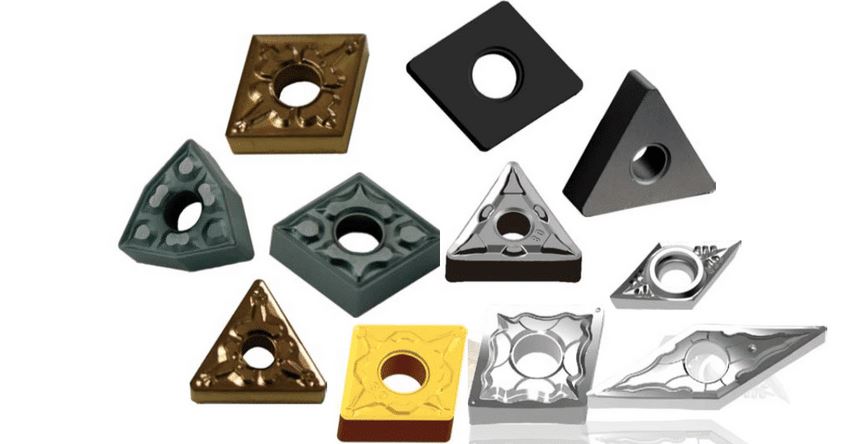
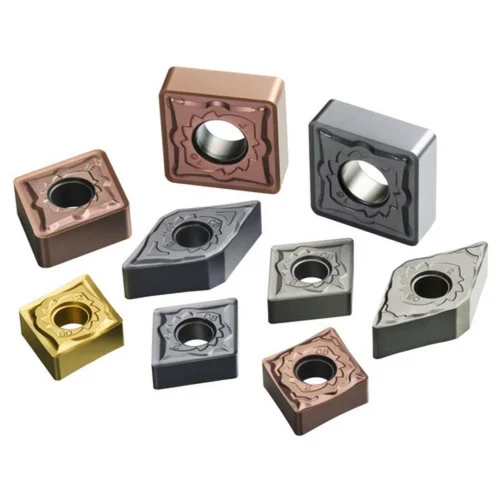
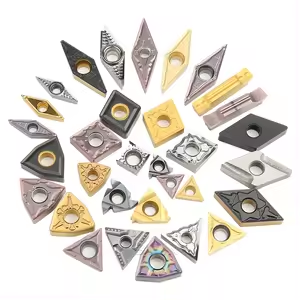
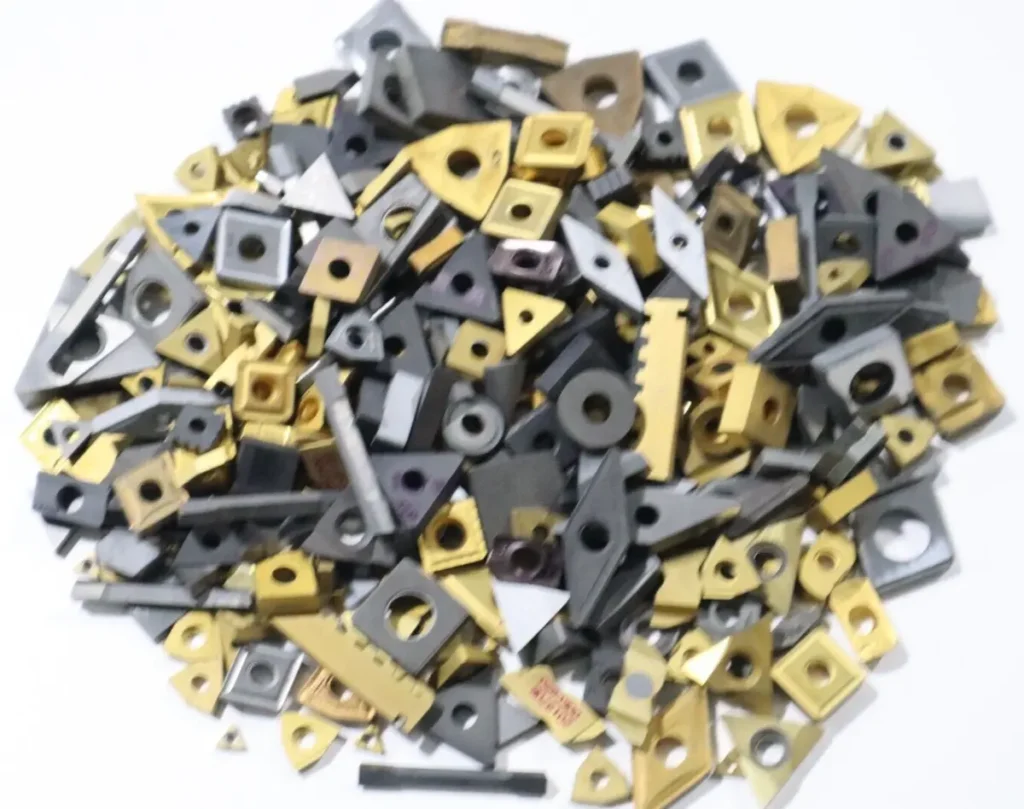
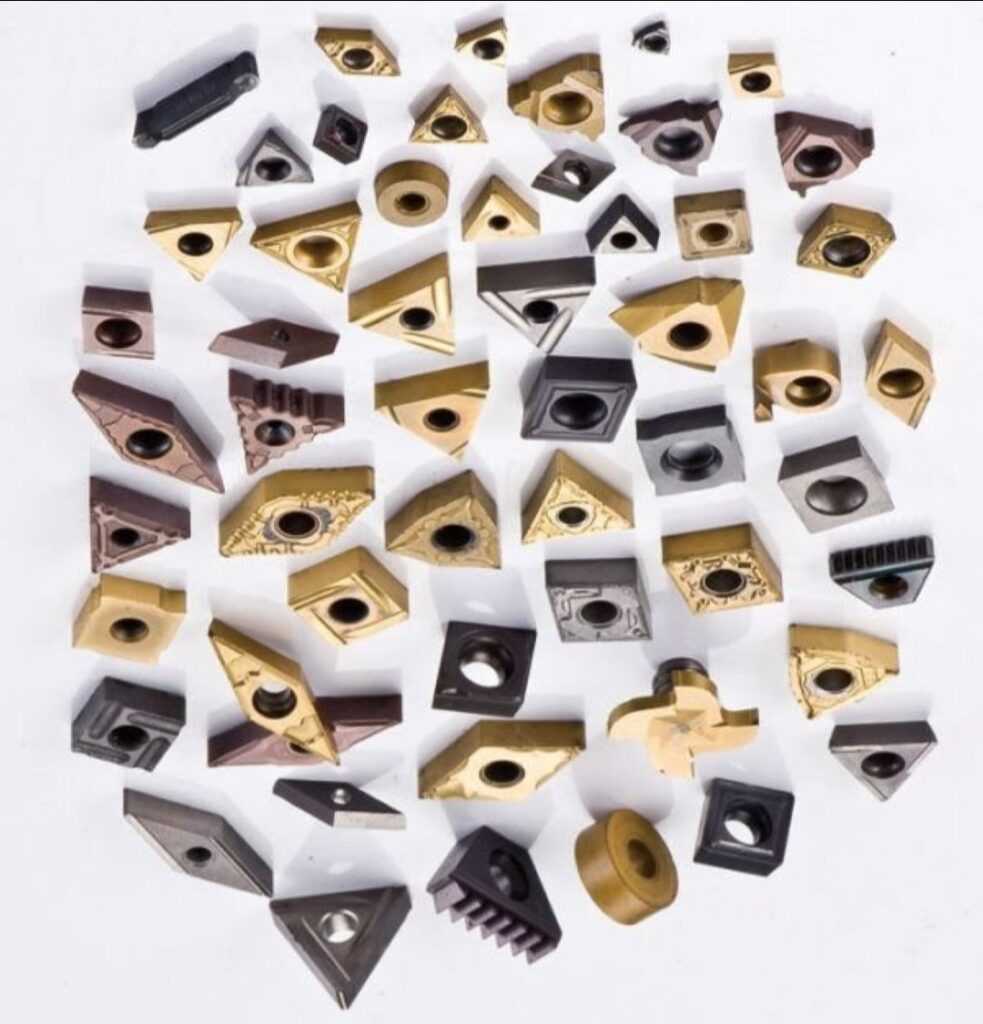
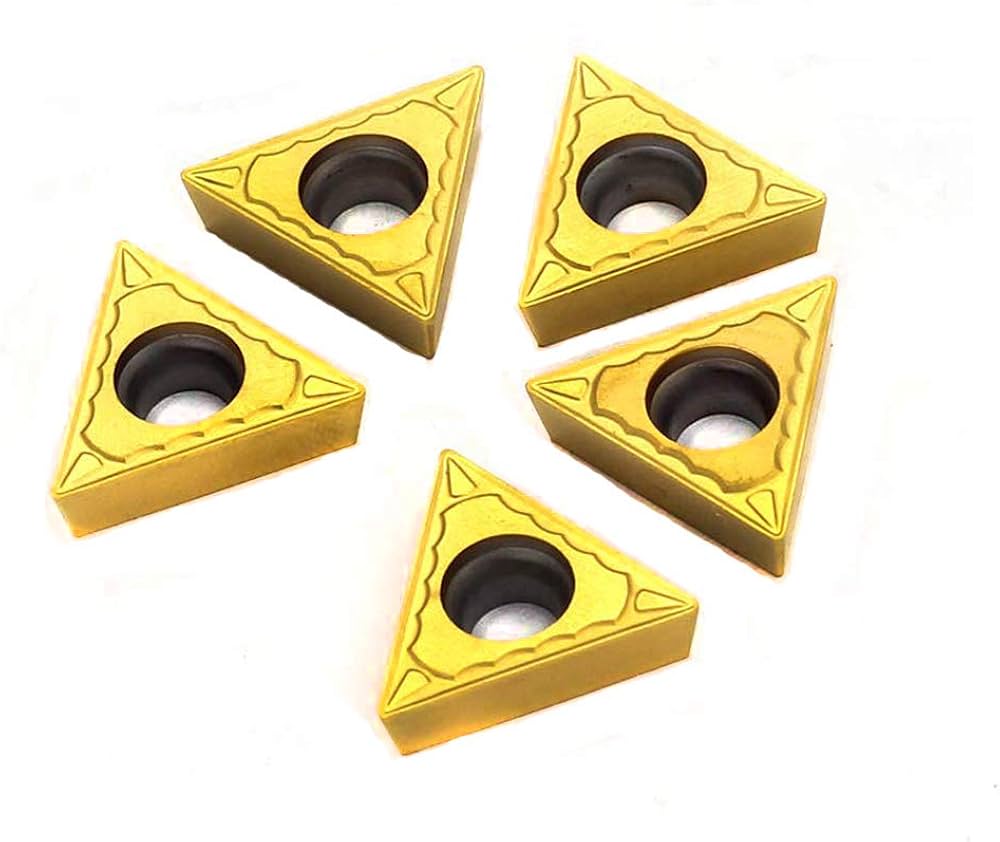
Dureté, solidité et résistance à l'usure
Les plaquettes en carbure se distinguent par leur dureté, leur solidité et leur résistance à l'usure. Le tableau suivant compare ces propriétés selon les différentes qualités :
| Grade | Dureté (HRA) | Résistance (MPa) | Résistance à l'usure |
|---|---|---|---|
| WC/Co | 90-94 | 2000-2500 | Excellent |
| WC/TiC/Co | 92-95 | 2200-2700 | Très élevé |
| WC/TaC/Co | 91-93 | 2100-2600 | Haut |
| WC/NbC/Co | 92-94 | 2300-2800 | Excellent |
Spécifications, tailles et normes
Les plaquettes en carbure sont disponibles dans différentes spécifications et tailles, conformément aux normes industrielles. Voici un tableau détaillant les spécifications courantes :
| Spécifications | Taille (mm) | Forme | Standard |
|---|---|---|---|
| ISO P35 | 6-25 | Triangle | ISO 1832 |
| ISO K10 | 5-20 | Carré | ISO 1832 |
| ANSI C2 | 4-30 | Diamant | ANSI B212.4 |
| ISO M20 | 8-22 | Rond | ISO 1832 |
| ANSI C5 | 3-28 | Trigon | ANSI B212.4 |
Fournisseurs et détails des prix
Plusieurs fournisseurs proposent des plaquettes en carbure, chacun à des prix différents. Voici un tableau énumérant quelques fournisseurs importants et leurs tarifs :
| Fournisseur | Fourchette de prix (USD) | Notes |
|---|---|---|
| Sandvik Coromant | 10-50 | Qualité et fiabilité |
| Kennametal | 8-45 | Gamme étendue de produits |
| Outils Seco | 12-55 | Connue pour ses solutions innovantes |
| Matériaux Mitsubishi | 9-48 | Durable et efficace |
| Sumitomo Electric | 11-52 | Axé sur la précision |
Choisir le bon Plaquettes en carbure
Le choix de la bonne plaquette en carbure dépend de plusieurs facteurs, notamment du matériau usiné, du type d'opération d'usinage et de l'état de surface souhaité. Voici un guide pour vous aider dans le processus de sélection :
| Critères | Plaquette carbure recommandée |
|---|---|
| Matériau Dureté | WC/TiC/Co pour les matériaux durs |
| Finition de la surface | V-Style ou D-Style pour les finitions fines |
| Opération d'usinage | Type R pour l'ébauche lourde, type C pour le tournage général |
| Stabilité de la machine | S-Style pour les coupes interrompues, A-Style pour le profilage |
| Considération des coûts | Évaluer les fournisseurs tels que Kennametal et Seco Tools pour des options rentables |
Avantages et limites
Les plaquettes en carbure présentent de nombreux avantages, mais aussi certaines limites. Voici une analyse comparative :
| Aspect | Avantages | Limites |
|---|---|---|
| Durabilité | Grande résistance à l'usure et longue durée de vie de l'outil | Coût initial plus élevé que pour les HSS |
| Précision | Excellent pour obtenir des tolérances fines | Nécessité d'une manipulation et d'une configuration précises |
| Polyvalence | Convient à une large gamme de matériaux | Limité dans les applications à très haute température |
| Performance | Maintient l'efficacité de la coupe à des vitesses élevées | Peut être cassant s'il n'est pas utilisé correctement |
FAQ
| Question | Réponse |
|---|---|
| À quoi servent les plaquettes en carbure ? | Les plaquettes en carbure sont utilisées pour couper, façonner et finir les matériaux dans diverses opérations d'usinage. |
| Comment choisir la bonne plaquette carbure ? | Tenez compte de facteurs tels que la dureté du matériau, l'état de surface souhaité et le type d'opération d'usinage. |
| Les plaquettes en carbure sont-elles rentables ? | Oui, malgré leur coût initial plus élevé, leur durabilité et leur précision les rendent rentables à long terme. |
| Les plaquettes en carbure peuvent-elles être utilisées sur tous les matériaux ? | Ils conviennent à une large gamme de matériaux mais peuvent ne pas être idéaux pour des applications à très haute température. |
| Comment les plaquettes en carbure sont-elles fabriquées ? | Ils sont fabriqués en combinant des poudres de carbure avec des liants, puis en les pressant et en les frittant. |




